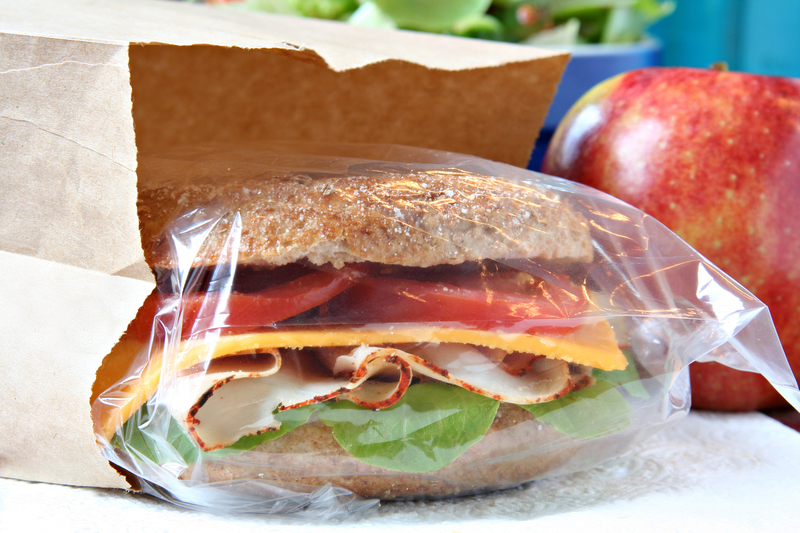How to Organize and Pack Efficiently for Moving Day
Moving day is a combination of excitement, anticipation, and--let's be honest--often, a fair bit of stress. Proper organization and efficient packing are two key elements that separate a smooth move from a chaotic one. Whether it's your first time relocating or you've done it before, learning how to organize and pack efficiently for moving day can save you time, energy, and even money.
In this comprehensive guide, we'll walk you through the essential steps to ensure your move is as hassle-free as possible. We'll cover everything from planning and decluttering to packing tips, labeling systems, and preparing for your first night in your new home. Follow these strategies for a streamlined, efficient move that will make settling in much easier.

Why Efficient Packing Matters on Moving Day
If you've ever experienced the chaos of last-minute packing, you'll know the pain of lost boxes, broken items, and unnecessary stress. Efficient organization and packing can help you:
- Reduce stress by having a clear plan
- Avoid damage to your belongings with strategic packing
- Save time during both moving and unpacking
- Lower costs by using fewer boxes and less packing material
- Enjoy a smoother transition into your new space
Let's dive into detailed tips for every stage of the moving process.
Step 1: Create a Moving Plan
Start Early
The key to efficiently organizing for moving day is to start as soon as possible. Ideally, begin planning and prepping at least four to six weeks before your move. Early preparation allows you to pace yourself and tackle manageable tasks each day, minimizing overwhelm.
Develop a Checklist
A moving checklist is your best friend during the relocation process. Write down every task--from collecting packing supplies to arranging utility connections at your new home. Break down large tasks into smaller, actionable steps, and establish deadlines to keep yourself accountable.
- Decluttering and sorting rooms
- Gathering packing materials
- Notifying change of address
- Booking movers or rental trucks
- Scheduling utilities
- Setting aside essentials for moving day
Update your checklist regularly and keep it accessible.
Step 2: Declutter Before You Pack
Sort, Donate, and Discard
A move is the perfect opportunity to declutter your life. Go room by room, and sort your belongings into four main categories:
- Keep (items you'll take with you)
- Donate (good condition items to give away)
- Sell (valuable items to list online or via a garage sale)
- Discard (broken, unusable items to throw away)
Decluttering means you'll have less to pack, transport, and unpack--making it a foundation of efficient moving. Plus, donating and selling items can help others and provide extra moving funds.
Step 3: Gather the Right Packing Supplies
Before diving into packing, collect all necessary supplies. Having everything on hand keeps you organized and efficient.
- Sturdy moving boxes of assorted sizes
- Packing tape and dispensers
- Bubble wrap and packing paper
- Stretch wrap for furniture and electronics
- Markers or color-coded labels
- Scissors and utility knives
- Ziplock bags for small items and hardware
Tip: Use original boxes for electronics and appliances when possible for added protection.
Step 4: Organize and Categorize Your Belongings
Pack Room by Room
Packing by category or room is one of the most efficient ways to organize before moving day. This method keeps similar items together, makes labeling easier, and simplifies unloading at your new home. Start with rooms you use least (like the attic or basement).
- Clearly label boxes with the room and contents
- Assign a color to each room for fast identification
- Note if the box is fragile or needs special care
Packing Tips for Fragile and Valuable Items
Handle breakables and valuables with extra caution. Wrap each item individually with bubble wrap or newsprint. Fill extra space in boxes with towels, linens, or packing peanuts to prevent movement.
- Mark boxes with "FRAGILE" and "This Side Up"
- Use small boxes for heavy items like books or dishes
- Don't overload boxes--keep weight under 50 pounds if possible
Step 5: Label Everything for Maximum Efficiency
Develop a Labeling System
One of the best moving tips is to label every box clearly. A detailed labeling system not only helps you and your movers know where items belong but also speeds up the unpacking process.
- Use permanent markers or pre-printed labels
- List the room and a brief description of the contents
- Use colored tape for even quicker identification
- Number your boxes and keep an inventory list (helpful for long-distance moves)
For even more organization, consider using apps or spreadsheets for an electronic inventory.
Step 6: Pack a Moving Essentials Box
The First-Night Kit
It's easy to get so focused on packing that you forget about those first few hours or days after moving in. Pack a clearly labeled "essentials" box or bag that contains everything you'll need urgently at your new home.
- Toiletries and medications
- Chargers and electronics
- Bedding and a change of clothes
- Important documents (passports, contracts, etc.)
- Snacks and water
- Basic tools (screwdrivers, openers, etc.)
*This step is vital for families with kids or pets*. Having basic supplies at your fingertips helps you settle in with minimal fuss on your first night.
Step 7: Disassemble and Protect Furniture
Furniture Prep Tips
Large furniture items are prone to damage if not properly prepared. Disassemble beds, tables, or shelving where possible, and keep all small parts such as screws or bolts in clearly-labeled ziplock bags.
- Wrap furniture in bubble wrap or moving blankets
- Protect sharp corners with cardboard or foam protectors
- Tape hardware bags securely to the disassembled pieces
- Photograph furniture before disassembly for easier reassembly
These simple precautions make both loading and reassembling furniture much easier and safer.
Step 8: Enlist Help and Communicate Clearly
Get the Right Help
Whether you're hiring a moving company or recruiting friends and family, efficient communication ensures that moving day runs smoothly.
- Share your moving plan and schedule in advance
- Provide clear instructions about what goes where
- Assign roles--who will load, drive, or supervise
- Have food and refreshments on hand to keep everyone energized
If you're working with professional movers, walk them through your organization system and labeling method, highlighting fragile or special-care items.
Step 9: Moving Day - Stay Organized
Loading the Truck Efficiently
Strategically loading the moving truck prevents damage and makes unloading a breeze. Pack heavier items such as furniture and appliances first. Place lighter, fragile boxes on top. Store essentials and first-night items near the door for easy access.
- Use straps to secure larger items
- Distribute weight evenly
- Fill gaps with soft items like pillows and linens
Keep Important Documents Handy
Always carry essential papers (like contracts, IDs, and lease agreements) with you. Don't pack them in the moving truck.
Step 10: Unpacking and Settling In
Tackle One Room at a Time
Upon arrival at your new home, resist the urge to unpack everything at once. Focus on high-priority rooms like the kitchen and bedrooms first. Work through each room using your labeled boxes and inventory to stay organized.
Assemble Furniture and Arrange Essentials
Reassemble basic furniture before moving to non-essential items. Use your inventory to check that nothing is missing and report any damages promptly.
Additional Moving Organization Tips for Maximum Efficiency
- Take photos of electronics before unplugging, so you can reconnect everything easily later
- Use suitcases and duffel bags for clothes and heavier items like books
- Color code boxes by category (kitchen, bedroom, bathroom, etc.)
- Label cords and cables to prevent confusion at your new place
- Keep cleaning supplies accessible for a quick clean-up before leaving or when arriving

Frequently Asked Questions About Efficient Packing for Moving Day
How do I pack efficiently for a last-minute move?
If your move is on short notice, focus on priorities: essential items, valuables, and key documents. Use sturdy trash bags for clothing and soft goods, and forgo sorting until after your move. Ask for help if possible!
Is it worth hiring professional packers for efficiency?
Professional packers save you considerable time and ensure safe, secure packing. For busy individuals or large households, this added expense often pays for itself in reduced stress and time savings.
How can I make unpacking easier after the move?
A clear labeling and inventory system ensures you can find what you need, when you need it. Unpack high-priority rooms first, and dispose of packing materials as you go to keep your space organized.
Conclusion: Moving Day Success Starts with Smart Organization
Learning how to organize and pack efficiently for moving day is all about proactive planning and thoughtful execution. By decluttering, packing strategically, labeling clearly, and keeping your essentials accessible, you'll create an organized system that minimizes stress and maximizes efficiency.
Whether you're downsizing or upsizing, moving across town or cross-country, follow these proven strategies to make your transition as smooth as possible. Happy moving!
Keywords and Variations Used:
How to organize and pack efficiently for moving day, efficient packing for moving day, organized moving day tips, pack efficiently for relocation, moving day organization, packing tips for moving, moving organization tips



